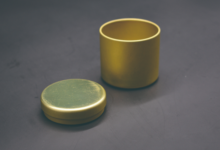What Is The History Of Dressage?

Dressage, a highly skilled and disciplined form of horse training, has a rich history that dates back to ancient times. Its origins can be traced to Ancient Greece, where the training and riding of horses held great importance in both military and civilian contexts.
The evolution of dressage continued throughout Europe, with various influences shaping its development into the intricate art it is today. With its incorporation as a modern Olympic sport, dressage has gained global recognition and continues to captivate audiences with its elegance and precision.
In Ancient Greece, horse training was considered an essential skill for both warfare and daily life. The Greeks recognized the need for disciplined horses that could be easily controlled by their riders. Through meticulous training techniques, they sought to develop athletic horses capable of performing complex movements with grace and agility. This emphasis on horsemanship laid the foundation for what would later become known as dressage.
As Europe evolved over time, so did dressage. It became an integral part of European equestrian culture, particularly among military officers who valued well-trained horses in battle. Influences from different regions shaped the practice further, such as the Spanish Riding School’s development of haute école movements or airs above the ground. These intricate maneuvers showcased not only the horse’s physical abilities but also the rider’s skill in communicating subtle cues through their body language.
The inclusion of dressage as an Olympic sport in 1912 marked a significant milestone in its history. This recognition elevated dressage to a global platform where riders from different nations could showcase their mastery of this refined art form. Today, dressage competitions are held at various levels worldwide, ranging from local events to prestigious international championships like the Olympics and World Equestrian Games.
In conclusion, understanding the history of dressage allows us to appreciate its roots in ancient traditions while acknowledging its ongoing evolution into a modern competitive sport. Through centuries of refinement and dedication by trainers and riders alike, dressage has become a captivating display of harmony and unity between horse and rider. As we delve into the history of dressage, we gain insight into its cultural significance, technical intricacies, and the profound bond it creates between human and equine.
Ancient Greece: The Origins and Importance of Horse Training
The origins and importance of horse training in Ancient Greece constitute a significant aspect of the history of dressage.
The Greeks, renowned for their love and appreciation of horses, recognized the necessity of training these noble creatures to achieve harmony and grace in movement.
Horse training techniques were developed to enhance both the physical abilities and mental discipline of the animals.
The Greeks believed that through careful instruction and practice, horses could be transformed into obedient companions capable of executing intricate maneuvers with precision and elegance.
They employed various methods such as longeing, lunging, and flexion exercises to develop strength, flexibility, and balance in their equine partners.
These techniques aimed not only at improving the horses’ physical capabilities but also at fostering a deep connection between rider and mount.
In this way, dressage became more than just a means of controlling a horse; it evolved into an art form that embodied the ideals of beauty, grace, and unity between human and animal.
The legacy of ancient Greek horse training techniques continues to influence modern dressage practices, providing a solid foundation for riders seeking to achieve true harmony with their equine partners today.
Evolution of Dressage in Europe
The evolution of dressage in Europe is a fascinating subject that encompasses its origins as a form of military training and its transformation into an entertainment activity for the nobility.
Dressage, which can be traced back to ancient Greece, initially served as a means to train horses for battle by teaching them precise movements and maneuvers.
Over time, however, it evolved into a refined and elegant art form that was enjoyed by the aristocracy as a display of skill and grace.
Dressage as military training
Originating in ancient Greece, dressage was initially developed as a method of military training for cavalry horses. The art of dressage played a crucial role in equipping horses with the necessary skills to perform intricate military tactics on the battlefield.
It involved training techniques that focused on precision, obedience, and agility. Horses were trained to respond to subtle cues from their riders, enabling them to execute complex maneuvers such as lateral movements, collection, and extension.
Through dressage, cavalry horses became highly responsive and maneuverable, allowing them to navigate challenging terrains and engage in combat effectively. This rigorous training not only enhanced the horse’s physical capabilities but also sharpened their mental acuity and discipline.
Dressage as military training laid the foundation for modern-day dressage sport by emphasizing the importance of harmony between horse and rider, control over movement, and an unwavering focus on technique.
Despite its origins in military preparation, dressage has evolved into an elegant equestrian discipline that captivates audiences worldwide with its gracefulness and beauty.
Entertainment for nobility
Entertainment for nobility, dressage transformed from a military training practice into an elegant display of precision and grace that continues to captivate audiences worldwide.
The aristocracy of Europe embraced dressage as a form of entertainment during the Renaissance period, using it to showcase their wealth and refined taste. Dressage performances became elaborate affairs, held in grand arenas and attended by royalty and high society.
The horses were lavishly adorned with ornate saddles, bridles, and colorful ribbons. The riders wore extravagant costumes that reflected the opulence of the time.
In these performances, highly trained horses performed intricate movements such as pirouettes, piaffes, and tempi changes in perfect harmony with their riders.
The elegance and skill displayed in dressage entertained the nobility while also serving as a symbol of status and power.
Today, dressage competitions continue to attract audiences who appreciate the artistry and discipline involved in this centuries-old equestrian sport.
Dressage as a Modern Olympic Sport
Dressage as a modern Olympic sport showcases the remarkable grace, precision, and partnership between horse and rider.
This discipline requires an intricate understanding of equine biomechanics, as well as extensive training in developing the horse’s strength, suppleness, and responsiveness to aids.
Today, dressage holds great significance in the equestrian world as it represents the pinnacle of horsemanship and serves as a foundation for other equestrian disciplines.
The grace, precision, and partnership between horse and rider
The seamless coordination and harmonious synchronization between the horse and rider in dressage has captivated audiences for centuries.
This partnership is achieved through rigorous horse training techniques that develop both physical strength and mental focus.
Dressage competitions showcase the incredible grace, precision, and elegance of this sport, where horse and rider move together as one.
The rider’s aids are subtle yet powerful, guiding the horse effortlessly through intricate movements such as flying changes, pirouettes, and piaffes.
The trust and understanding between horse and rider are paramount in achieving these precise maneuvers, requiring years of dedicated practice to perfect.
As spectators witness the beauty of dressage performances, they can’t help but be drawn into a world where freedom is expressed through absolute control and unity with nature’s most majestic creature – the horse.
The significance of dressage in the equestrian world today
One notable statistic illustrates the popularity of dressage in the equestrian world today, with over 30 million participants worldwide actively engaged in this discipline.
Dressage techniques have evolved over centuries to create a harmonious partnership between horse and rider, emphasizing grace, precision, and communication.
Today, dressage competitions showcase the mastery of these techniques through a series of movements executed with finesse and elegance.
The significance of dressage lies not only in its artistic beauty but also in its practical application.
Dressage training improves the horse’s balance, strength, and flexibility while enhancing their ability to respond to subtle cues from the rider.
This discipline is highly regarded for its emphasis on correct form and development of a willing equine partner.
Furthermore, dressage has become an essential component in other equestrian disciplines such as eventing and show jumping, as it provides a solid foundation for control and athleticism.
As riders strive for excellence in dressage, they embark on a journey that requires perseverance, dedication, and continuous refinement of their skills.
In this way, dressage embodies the pursuit of freedom through disciplined artistry and showcases the profound connection between horse and rider.
Frequently Asked Questions
How did dressage evolve in other parts of the world outside of Europe?
Cultural adaptations of dressage outside of Europe occurred through the introduction of equestrian traditions and techniques by colonizers, traders, and immigrants. International competitions played a crucial role in spreading and evolving dressage worldwide.
What are some key figures or influential riders in the history of dressage?
Throughout the history of dressage, there have been numerous influential riders and notable equestrians who have shaped and advanced the discipline. These individuals, through their skill, knowledge, and dedication, have contributed to the development and refinement of dressage techniques.
How has the training and techniques in dressage changed over time?
The evolution of dressage techniques has been influenced by advancements in technology, leading to more refined training methods and improved performance. The use of video analysis, training aids, and specialized equipment has enhanced the development of both horse and rider in dressage.
What are some common misconceptions or myths about dressage?
Common misconceptions about dressage include the belief that it is only for the wealthy elite, that it is cruel to horses, and that it requires forceful techniques. However, these myths are debunked by the principles of classical dressage which emphasize harmony and respect between horse and rider.
Are there any specific rules or regulations that govern dressage competitions?
Dressage competitions are governed by specific rules and regulations. The role of judges is to assess the performance of horse and rider based on predetermined criteria. A scoring system is used to evaluate each movement, ensuring fairness and consistency in competition.
Conclusion
In conclusion, the history of dressage is a fascinating journey that spans centuries and continents. From its origins in ancient Greece as a means of training horses for battle, to its evolution into a refined art form in Europe, to its establishment as a modern Olympic sport, dressage has come a long way.
The roots of dressage can be traced back to ancient Greece, where horsemanship was highly valued and considered an essential skill for both war and leisure. The Greeks recognized the importance of training horses to be obedient and responsive to their riders’ commands. This led to the development of various techniques and exercises that formed the basis of what we now know as dressage.
Over time, these techniques spread throughout Europe, particularly during the Renaissance period when equestrian arts became popular among nobility. Dressage evolved from being primarily focused on military purposes to becoming an art form in itself. Riders began incorporating intricate movements and patterns into their performances, showcasing both their own skill and the athleticism of their horses.
Today, dressage is an integral part of the Olympic Games, with top athletes from around the world competing for gold medals. It continues to evolve and push boundaries as riders strive for perfection in their performances. Dressage embodies precision, gracefulness, and harmony between horse and rider – a true testament to the partnership between human and animal.
In conclusion, dressage’s rich history reflects not only our fascination with horses but also our desire for mastery over them. Through centuries of refinement and innovation, it has become a sport that combines athleticism with artistry. Just as a skilled artist uses brushstrokes or a musician plays notes on an instrument, the dressage rider uses subtle cues and precise movements to communicate with their equine partner. Together they create a harmonious dance – an expression of beauty that captivates audiences worldwide.




